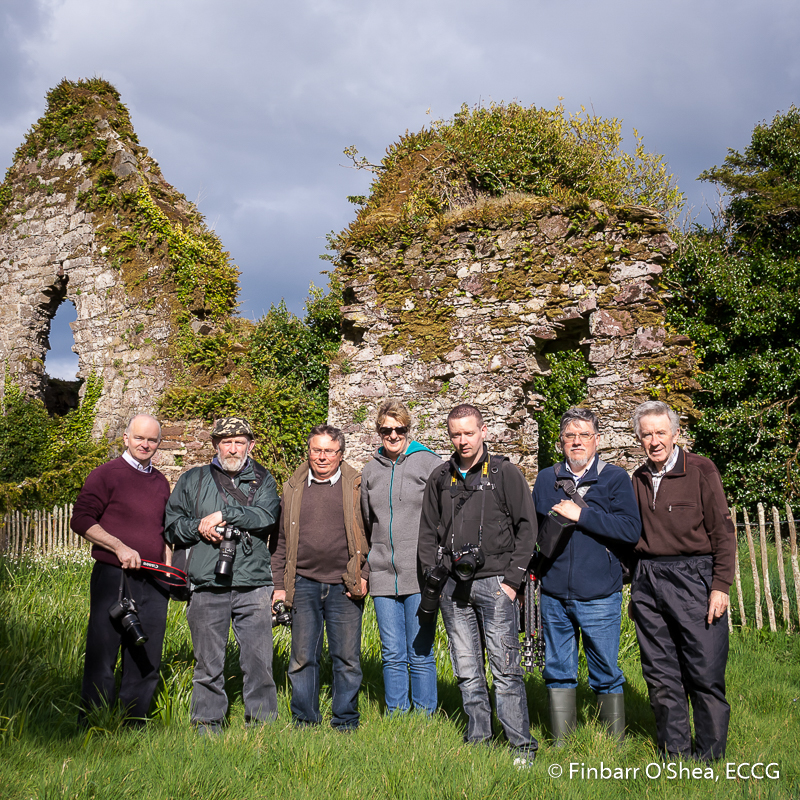
On Sunday last, we gathered at Youghal Bridge, Rhincrew area where the Blackwater empties into the sea. The western shore of this famous river was to be our project for day. We would explore the castles, bridges and woods of this ‘Irish Rhine’ from Youghal to Cappoquin, famous for it’s salmon fishing.
The river itself rises in the Mullaghareirk mountains in county Kerry at 750 feet above sea level and travels for 105 miles, firstly in an easterly direction. That’s an average fall of 7 feet in every mile! Then at Cappoquin, it takes a ninety degree turn southwards to Youghal. It passes through Rathmore, Mallow, Fermoy, Lismore and Cappoquin. In years gone by, it was used to transport coal from Wales and the schooners would take timber on the return journey. Much of the river is tidal, so the ships would unload and reload while sitting on mud, then wait for the high tide to sail again. Some might take half a load in Cappoquin and fill it up, downstream in deeper waters.
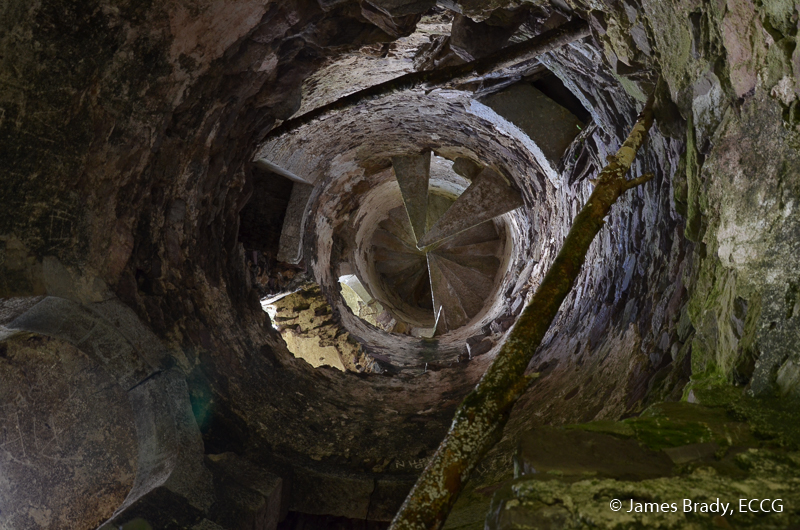 Our first stop was Templemichael. Here, we visited the ruin of a 14th century Geraldine castle where Walter Raleigh often stayed. There are the remains of a lovely spiral staircase there, with many limestone steps still in place. Here we met a local man, who filled us in on the history and stories of the area.
Our first stop was Templemichael. Here, we visited the ruin of a 14th century Geraldine castle where Walter Raleigh often stayed. There are the remains of a lovely spiral staircase there, with many limestone steps still in place. Here we met a local man, who filled us in on the history and stories of the area.
Alongside the castle is a church. This was lent to Catholics while the nearby Glendine church was being renovated. After that, it fell into a state of disrepair. We crossed a small tributary, The Toorig, and stopped briefly at the quaint Glendine church.
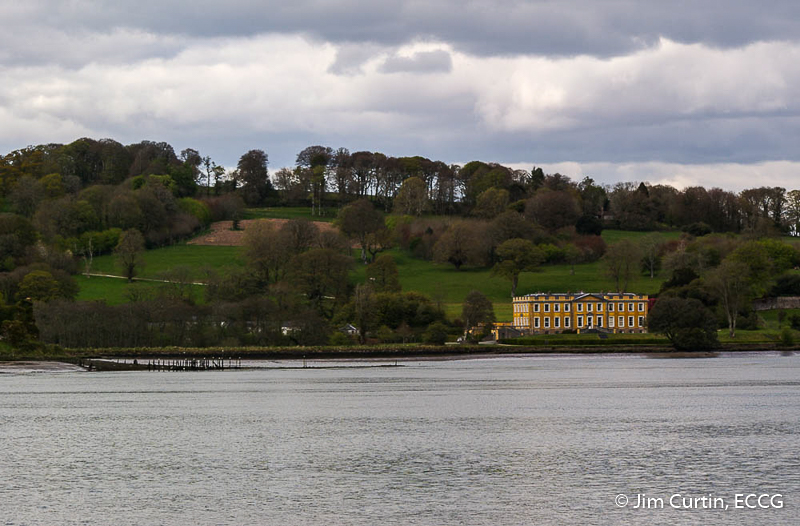 Onwards to Ballynatray Estate where, by kind permission, we visited Molana Abbey which was founded in 501AD. It is rumoured that leader of the Normans, Raymond Le Gros, is buried here!
Onwards to Ballynatray Estate where, by kind permission, we visited Molana Abbey which was founded in 501AD. It is rumoured that leader of the Normans, Raymond Le Gros, is buried here!
From here, we enjoyed the wonderful Ballynatray House a bright yellow hue against the green hill behind, which is available for weddings and other events. It has its own boat house and salmon weir.
Next, was old Strancally Castle and then new Strancally Castle 1834 and Keep. After that, the road climbed and we had spectacular views of the river. Next, we crossed ‘The Bride’ using ‘Camphire Bridge’.The Bride is the main tributary and is navigable for 7 miles. Here, we got some nice shots of the stacks of reeds by the riverside being dried, ready for thatching.
We photographed Dromana House, high above the Backwater where the Bride joins in. Here, it is said, the old lady, Countess of Desmond lived to 112 years when she fell off a tree and died tragically.
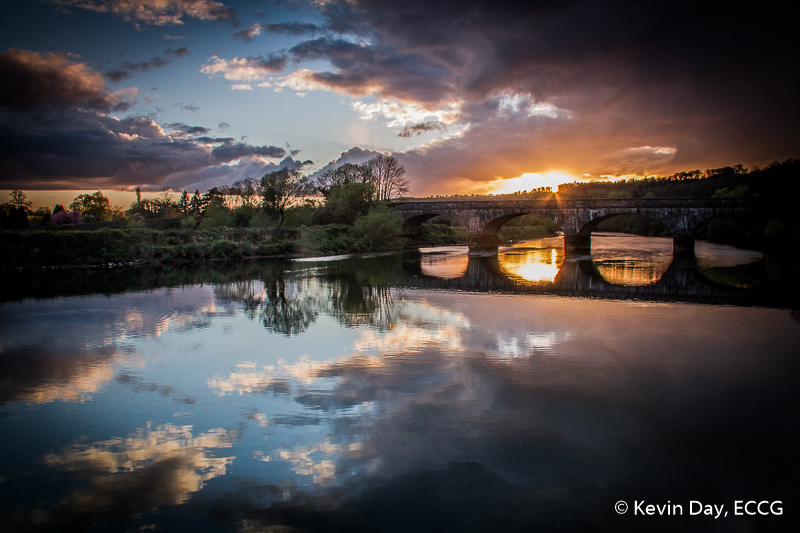 Finally, we arrived in Cappoquin, as planned in time for our sunset and we were not disappointed. Some of us went down to the slip at the rowing club where we had the choice of shooting west along the river, towards the the 6 arch road bridge or south towards the long since decommissioned 5 arch railway viaduct with steel spans.
Finally, we arrived in Cappoquin, as planned in time for our sunset and we were not disappointed. Some of us went down to the slip at the rowing club where we had the choice of shooting west along the river, towards the the 6 arch road bridge or south towards the long since decommissioned 5 arch railway viaduct with steel spans.
It turned into a spectacular sunset. Some of the members went on to Lismore and got great shots there also.
See our gallery from the shoot here. Enjoy!
– Kevin Day


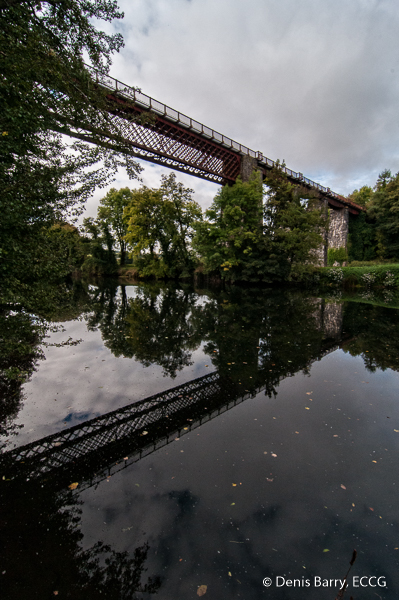 Our first port of call was the Carrigabrick viaduct on the, now closed, Waterford to Mallow railway line. Situated just downriver from the new motorway bridge on the M8, the last train to cross the viaduct was in March 1967 but not before it got its own starring role in the 1965 war film ‘The Blue Max’ when stunt pilot Derek Piggott flew a Fokker Dr I triplane under the viaduct with barely enough clearance on either side. The scene was the dramatic climax to the film, which saw two German WWI pilots (played by George Peppard and Jeremy Kemp) go head to head in a death defying duel of nerves to see which one would emerge as master of the skies.
Our first port of call was the Carrigabrick viaduct on the, now closed, Waterford to Mallow railway line. Situated just downriver from the new motorway bridge on the M8, the last train to cross the viaduct was in March 1967 but not before it got its own starring role in the 1965 war film ‘The Blue Max’ when stunt pilot Derek Piggott flew a Fokker Dr I triplane under the viaduct with barely enough clearance on either side. The scene was the dramatic climax to the film, which saw two German WWI pilots (played by George Peppard and Jeremy Kemp) go head to head in a death defying duel of nerves to see which one would emerge as master of the skies.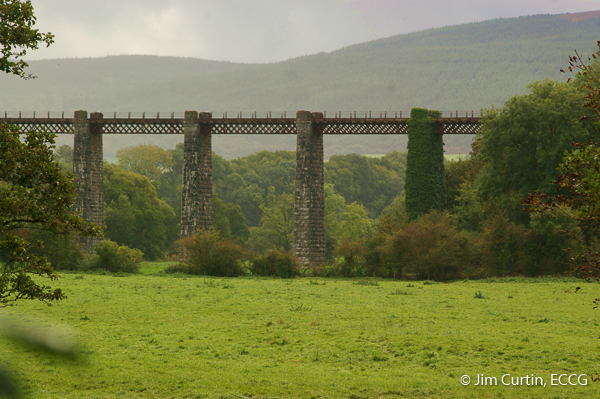 In the afternoon we headed to another viaduct on the same abandoned railway line at Kilcummer between Ballyhooly and Castletownroche. Spanning the Awbeg river near where it joins the Blackwater, the structure is another triumph of engineering which opened in June 1860 .
In the afternoon we headed to another viaduct on the same abandoned railway line at Kilcummer between Ballyhooly and Castletownroche. Spanning the Awbeg river near where it joins the Blackwater, the structure is another triumph of engineering which opened in June 1860 .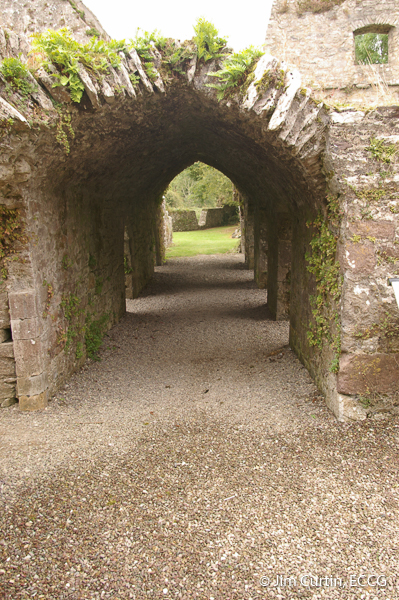 The nearby Agustinian Priory of St. Mary at Bridgetown, founded between 1202 and 1216 and dissolved in 1541 was also worth a visit. The site, which was made accessible to the public by Cork County Council in the 1970s, is substantially 13th century, and is among the most extensive of any religious house established in Ireland in that period. There are also structures and details from the late medieval (15th to 16th century), early modern (17th century) and recent (19th and 20th century) periods.
The nearby Agustinian Priory of St. Mary at Bridgetown, founded between 1202 and 1216 and dissolved in 1541 was also worth a visit. The site, which was made accessible to the public by Cork County Council in the 1970s, is substantially 13th century, and is among the most extensive of any religious house established in Ireland in that period. There are also structures and details from the late medieval (15th to 16th century), early modern (17th century) and recent (19th and 20th century) periods. Thinking that our shoot was over for the day, we came across a small crowd gathered at the bridge over the Awbeg at Kilcummer on our way back to Fermoy. On enquiry, we found out that about 150 horses and riders on the Avondhu Hunt fun ride were expected at the spot in a few minutes. Enough said! Cameras were back out again and right on cue, the horses appeared ambling lazily down the road towards us and then turning left into the river creating a wonderful scene for which we were totally in the wrong position!! Nevertheless, the sight and sound of so many horses in one place was worth witnessing and, as it is an annual event, maybe we’ll get it next time ’round.
Thinking that our shoot was over for the day, we came across a small crowd gathered at the bridge over the Awbeg at Kilcummer on our way back to Fermoy. On enquiry, we found out that about 150 horses and riders on the Avondhu Hunt fun ride were expected at the spot in a few minutes. Enough said! Cameras were back out again and right on cue, the horses appeared ambling lazily down the road towards us and then turning left into the river creating a wonderful scene for which we were totally in the wrong position!! Nevertheless, the sight and sound of so many horses in one place was worth witnessing and, as it is an annual event, maybe we’ll get it next time ’round.